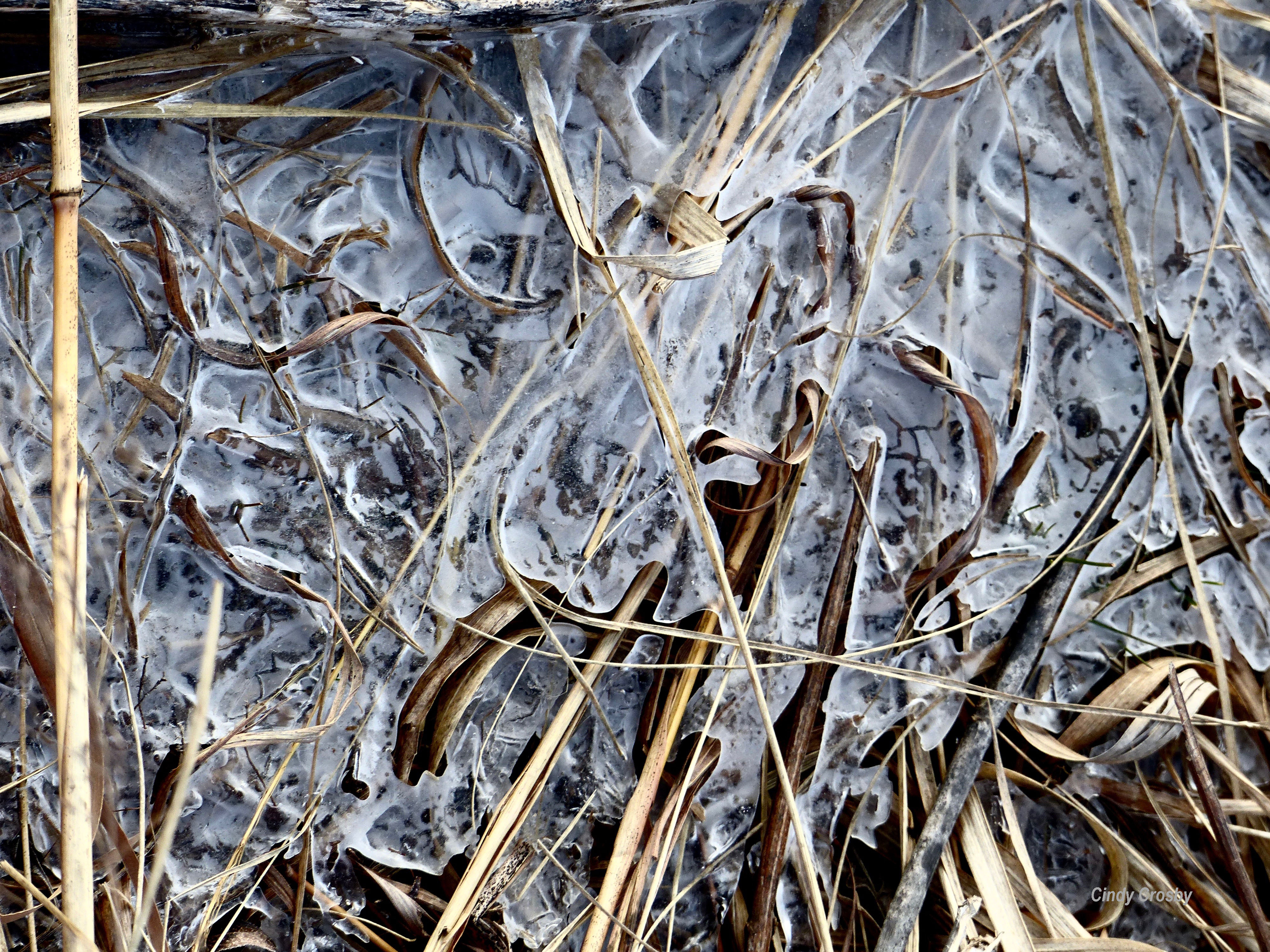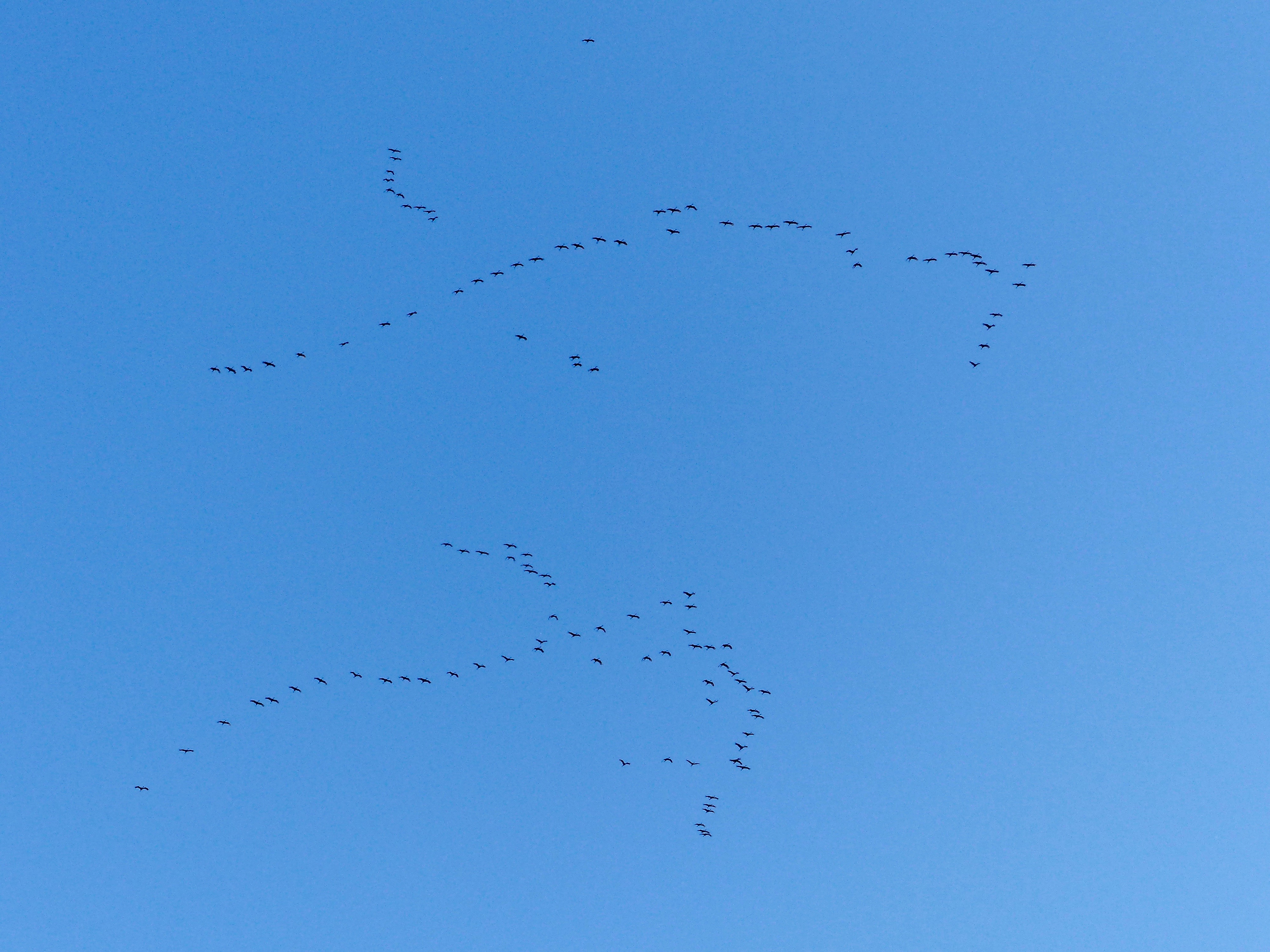“If you stand still long enough to observe carefully the things around you, you will find beauty, and you will know wonder.” — N. Scott Momaday
******
Zero degrees. My backyard birdfeeders are mobbed.

The squirrels take their share. I don’t begrudge them a single sunflower seed this week.

It’s tempting to stay inside. Watch the snow globe world from behind the window. It’s warmer that way. But February won’t be here for long.

Let’s pull on our coats. Wrap our scarves a little tighter. Snuggle into those Bernie Sanders-type mittens.

Need a extra push, during these polar vortex days? Consider these five reasons to get outside for a prairie hike this week.
******
- Bundle up in February and marvel at the way snow highlights each tree, shrub and wildflower.

Enjoy how the snow drifts into blue shadows on the prairie, punctured by blackberry canes. A contrast of soft and sharp; staccato and legato; light and dark.

Notice: Rather than being muzzled and smothered by snow, the prairie embraces it, then shapes it to its February tallgrass specifications.

Snow in February creates something wonder-worthy.
2. The restrained palette of February demands our attention. Ash and violet. Black and blue. A little red-gold. A bit of dark evergreen.

You’d think it would be monotonous. And yet. Each scene has its own particular loveliness.

We begin to question our previous need for bright colors…

…as we embrace the simplicity of the season.

As we hike, there’s a yearning for something we can’t define. More daylight? Warmth? Or maybe, normalcy? Our personal routines and rhythms of the past 12 months have been completely reset. There’s a sense of resignation. It’s been a long winter. February reminds us we still have a ways to go. Keeping faith with our prairie hikes is one practice that grounds us and doesn’t have to change. It’s reassuring.

3. In February, we admire the elusiveness of water. It’s a changeling. One minute, liquid. The next—who knows?

Winter plays with water like a jigsaw puzzle.

February’s streams look glacial.

Snuggle into your parka and be glad you’re hiking, not swimming.
4. If you are a minimalist, February is your season.

Everything is pared to essentials.

Many of the seeds are gone; stripped by mice, extracted by birds.

Everywhere around you are the remains of a prairie year that will soon end in flames.

What you see before you is the last whisper of what is, and was, and what will be remembered.

Look closely. Don’t forget.
5. In February, turn your eyes to the skies. What will you see? The marvel of a single red-tailed hawk, cruising over the tallgrass in the distance?

A sundog—that crazy play of sunlight with cirrus that happens best in the winter? Or a sun halo, blinding, dazzling?

Maybe it will be a full Snow Moon at the end of this month, setting sail across the sub-zero sky. Or a daylight crescent moon, scything the chill.

What will you see? You won’t know unless you go. Sure, it’s bitter cold. But soon, February will only be a memory. What memories are you making now?

The prairie is waiting.
*****
N. Scott Momaday (1934-) is the author of Earth Keeper (2020), House Made of Dawn (1968, winner of the Pulitzer Prize in Literature in 1969) and my favorite, The Way to Rainy Mountain (1969), a blend of folklore and memoir. Momaday is a member of the Kiowa tribe, a group of indigenous people of the Great Plains. Writer Terry Tempest Williams calls Earth Keeper “a prayer for continuity in these days of uncertainty.”
*****
Join Cindy in 2021 for an online class! See http://www.cindycrosby.com for a complete list of virtual offerings. Need a speaker? Email me through my website. All classes and programs with Cindy this winter and spring are offered online only. Join me from your computer anywhere in the world.
Begins Monday, February 8 (SOLD OUT) OR just added —February 15 (Two options): Tallgrass Prairie Ecology Online (Section A or B)--Digitally explore the intricacies of the tallgrass prairie landscape and learn how to restore these signature American ecosystems as you work through online curriculum. Look at the history of this unique type of grassland from the descent of glaciers over the Midwest millions of years ago, to the introduction of John Deere’s famous plow, to where we are today. We will examine different types of prairie, explore the plant and animal communities of the prairie and discuss strategies specific to restoring prairies in this engaging online course. Come away with a better understanding of the tallgrass prairies, and key insights into how to restore their beauty. All curriculum is online, with an hour-long in-person group Zoom during the course. You have 60 days to complete the curriculum! Join me–Registration information here.
February 24, 7-8:30 p.m. CST: The Prairie in Art and Literature Online. The tallgrass prairie is usually thought of for its diverse community of plants, animals, and insects. Yet, it is also an inspiration for a creative community! In this interactive online talk, natural history author and prairie steward Cindy Crosby will explore historical and contemporary writers and artists, musicians, and other creatives working in the prairie genre: from Neil Young to Willa Cather to graphic comic artists, quilters, and jewelers expressing the prairie through their work. See the prairie in a new light! Come away inspired to appreciate and express your love of the tallgrass as you enjoy learning about this prairie “community.” Offered by The Morton Arboretum: Register here.











 Look closely, and you may find a few tracks. Mammals are out and about in the cold. Birds. In my backyard, close to the prairie patch, we’ve been feeding the birds extra food during the bitter temperatures, and they, in turn, have graced us with color, motion, and beauty. As I scrubbed potatoes before having some friends over for dinner this weekend, my mundane task was made enjoyable by watching the interplay at the feeders outside my kitchen window. Scrubbing potatoes became meditation of sorts. Outside were squabbling sparrows. The occasional red-bellied woodpecker. Juncos–one of my favorites–nun-like in their black and white feathered habits. The occasional burst of cardinal color. Darting chickadees. Nuthatches, hanging upside down, zipping in for a peanut or two. Downy woodpeckers, like this one.
Look closely, and you may find a few tracks. Mammals are out and about in the cold. Birds. In my backyard, close to the prairie patch, we’ve been feeding the birds extra food during the bitter temperatures, and they, in turn, have graced us with color, motion, and beauty. As I scrubbed potatoes before having some friends over for dinner this weekend, my mundane task was made enjoyable by watching the interplay at the feeders outside my kitchen window. Scrubbing potatoes became meditation of sorts. Outside were squabbling sparrows. The occasional red-bellied woodpecker. Juncos–one of my favorites–nun-like in their black and white feathered habits. The occasional burst of cardinal color. Darting chickadees. Nuthatches, hanging upside down, zipping in for a peanut or two. Downy woodpeckers, like this one.







 The wildlife noises are also different than the summer orchestra of insect songs and bee-buzz. Woodpeckers suddenly become the stars of the savanna show after hovering in the background most of the summer. They hang out on the edge of the prairie; their sharp calls pierce the cold air and their drumming adds a staccato beat to the gray days. Nuthatches chatter companionably to each other. Their calls remind me of clown bicycle horns (
The wildlife noises are also different than the summer orchestra of insect songs and bee-buzz. Woodpeckers suddenly become the stars of the savanna show after hovering in the background most of the summer. They hang out on the edge of the prairie; their sharp calls pierce the cold air and their drumming adds a staccato beat to the gray days. Nuthatches chatter companionably to each other. Their calls remind me of clown bicycle horns (









